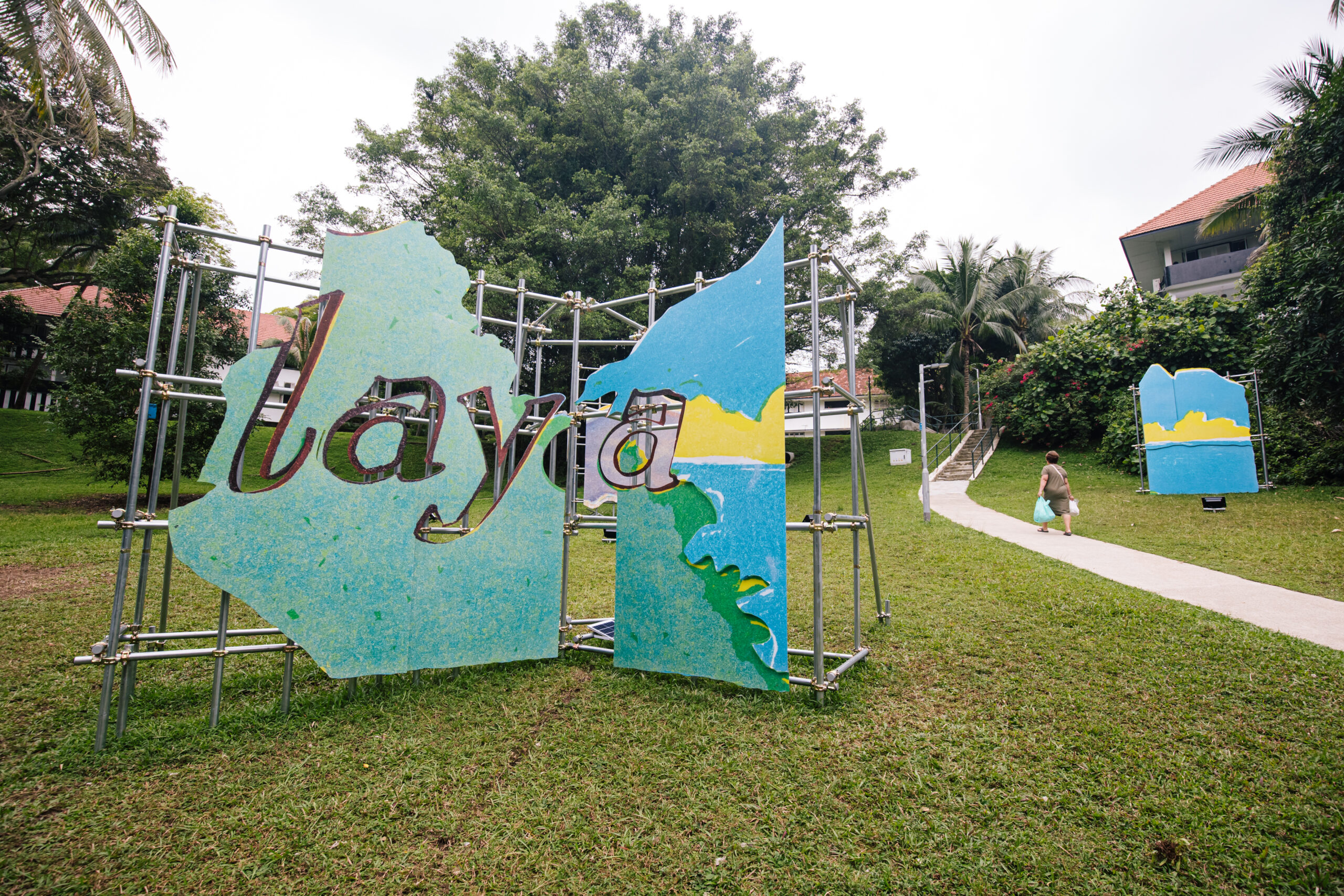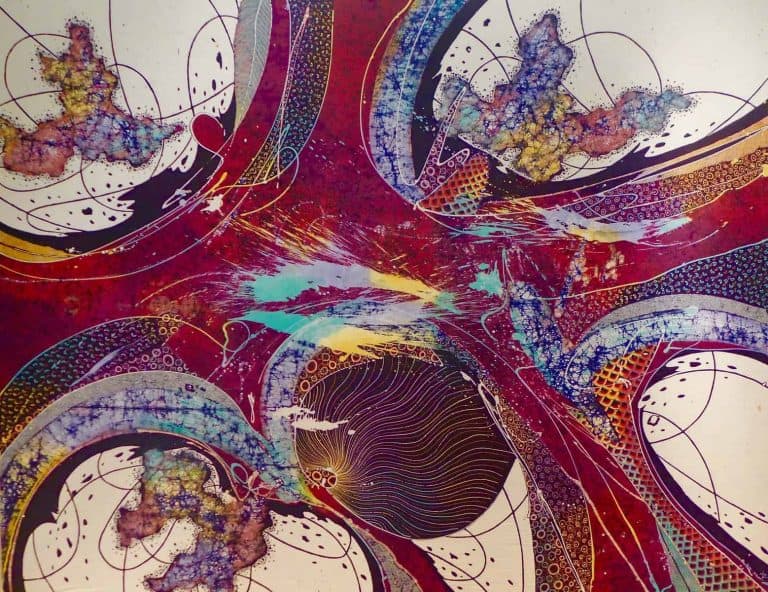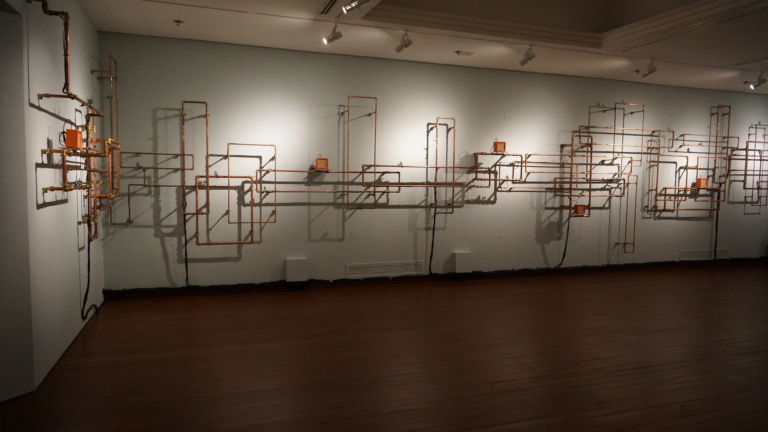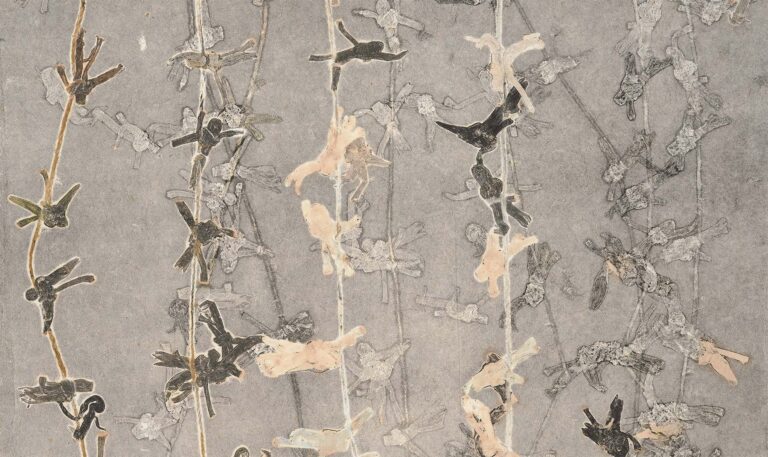The sun blazed as fatigue set in from my morning walk through the Port/raits of Tanjong Pagar trail. My body was slick with sweat, and to be honest, the last thing I wanted was another hour-long hike through the Rail Corridor, which the next trail, Singapore Deviation, had in store for me. I hopped onto bus 61 instead, deciding to head directly to Hilmi Johandi’s artwork at 55A Commonwealth Drive.
Alighting at a bus stop in the middle of an HDB estate, I noticed weeds sprouting from cracks between pavement tiles; even the shrubs had been left to their own devices. It was like stepping through a portal to a world long forgotten and something felt amiss.

A glitch in the matrix
Pondering the mysteries of these forsaken grounds, I wandered through the blocks’ dusty hallways, and yet found no sign of the artwork. Had I taken a wrong turn somewhere? Or was it all a ruse by The Everyday Museum (Singapore Art Museum’s public art initiative) to lead me through this ghost town?
The only clues were en-bloc letters from 2014, that were either slipped between gates or affixed onto the doors throughout the Tanglin Halt housing estate, which is situated within Commonwealth Avenue, Commonwealth Drive, Tanglin Road, and Queensway.

The present junction of Tanglin Halt and Tanglin Halt Close also used to serve as a stop on the former Keretapi Tanah Melayu Berhad (KTMB) railway line that connected Singapore and parts of Peninsular Malaysia. It was once a bustling hub, where trains briefly stopped to load and unload goods, hence the estate’s moniker, “Tanglin Halt.”
From another time
Contemplating these facts, I eventually discovered the access pathway to the Rail Corridor, tucked away like a mouse burrow amidst a wall of trees and shrubs. Framed by sprawling leaves, the path opened up through a section of the Rail Corridor before cutting through a vast sloping field.

On the field bordered by dense foliage, large-format prints leaned against galvanised steel scaffolding, creating the impression of a construction site. Yet, this was exactly what I was looking for: Hilmi Johandi’s installation Stagecraft: Landscaped Grounds.
Through this artwork, the artist highlights the histories and communities linked to the nearby area since the early 20th century. Composed of reimagined vintage travel advertisements on postcards and posters that promoted the Federated Malay States Railways (FMSR)—which was later rebranded as KTMB in 1962—the installation reflects the Rail Corridor’s historical role as a colonial transportation route.
Towering over me, the majority of the prints had a watered down, weathered look to them—as if prolonged sun exposure had dulled their once-vibrant colours. Angled to face different directions, each structure competes for attention, inviting viewers to explore the terrain and the space around them.
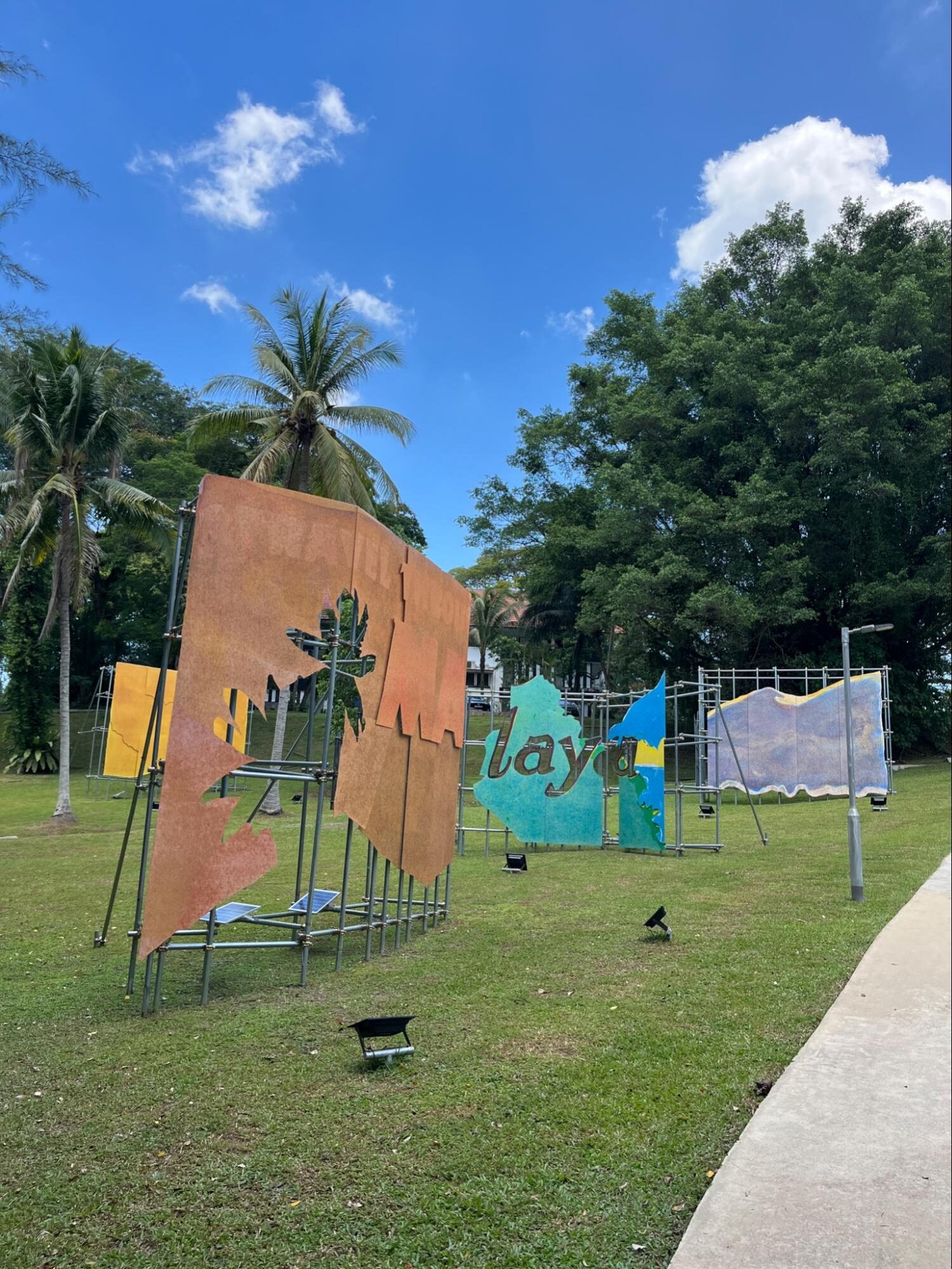
While each print displays distinct compositions and colour combinations, they share a textured patina reminiscent of rust and discolouration. The array of vague and rugged traces echo topographical forms, such as mountains, forests, and coastlines found on a map. A close look at the shapes revealed palm fronds, the cross-section of a gentle wave, and even incomplete letters coming together to form the phrase “Travel through Malaya”.
The travel advertisements’ familiar visual language evokes a sense of nostalgia and the allure of travel that was once associated with the colonial railway. However, by reworking and collaging the original materials and situating them within such a historical location, Johandi encourages viewers to delve into the site’s social and cultural significance and contemplate how our current perceptions of such narratives might have evolved.

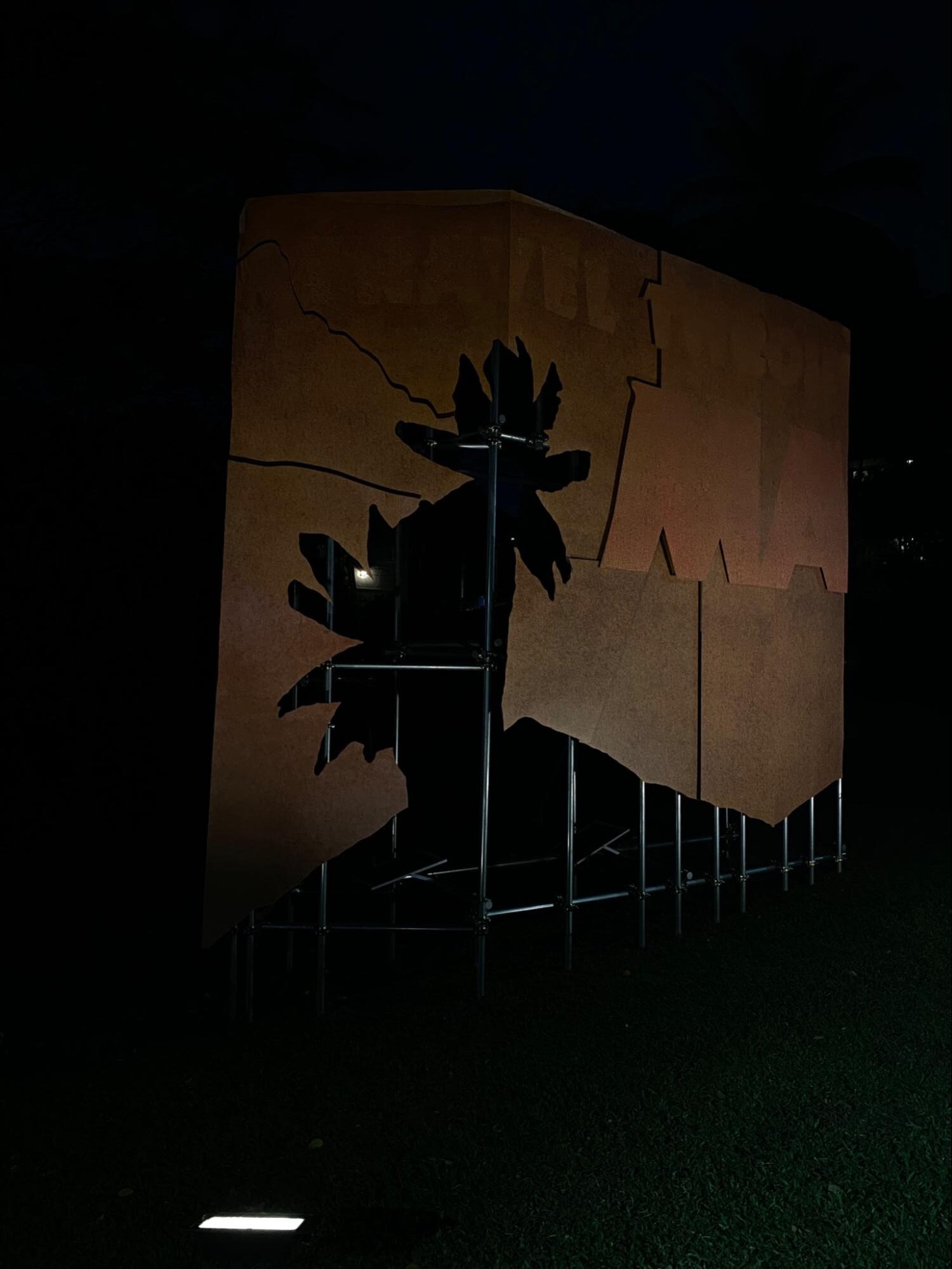
A nod to stagecraft
Beyond delving into the intricacies of two-dimensional image-making, Johandi is also interested in stagecraft and its tangible, three-dimensional components. Illustrating this is how the artist strategically located these large mounted prints near the original railway route and carefully considered the surrounding lighting design.

“What are considered the picture’s support and backing mechanisms become elements of the work,” Johandi elaborates, emphasising how the scaffolding structures used to prop the prints up are not only functional but also relate to the installation’s surroundings. For example, one might observe the resemblance between the scaffolding structures with those present around the neighbouring Wessex Estate houses.
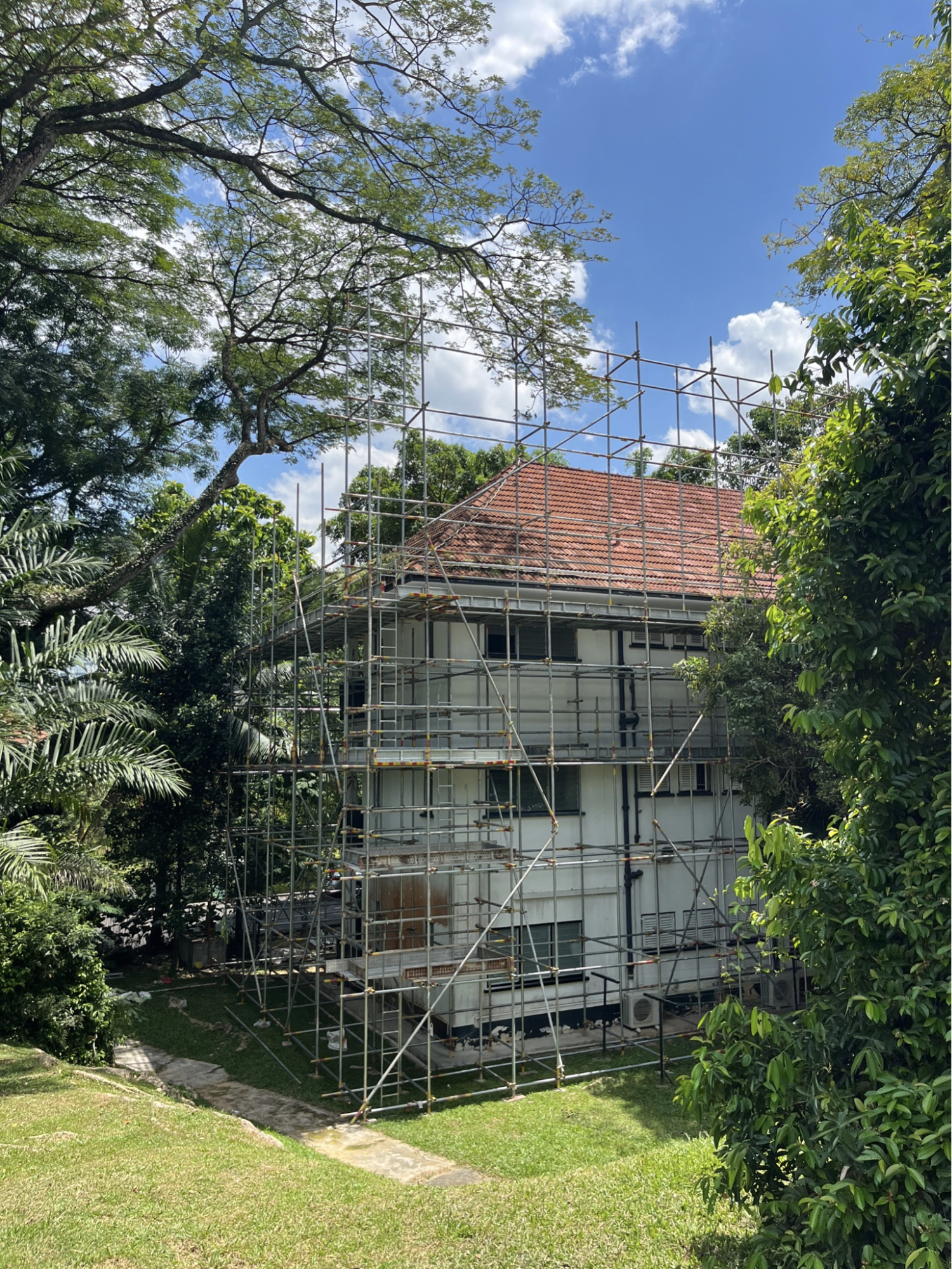
Johandi intends for viewers to “observe and acknowledge the multiple references and intersecting narratives” surrounding the artwork and its location. This includes delving into the history of the Sri Thandavaalam Muneeswaran Alayam shrine, which was constructed in the 1990s by KTMB railway workers who once resided in the quarters at 451A Queensway. Additionally, one could also consider the dissolution of the tight-knit community in Tanglin Halt Estate, the residential neighbourhood’s origins, and the network of nature parks and reserves that were once part of KTMB’s railway operations.
New perspectives
The history of the site that the Rail Corridor now occupies is long and layered. Amidst demolition and reconstruction, acknowledging its history establishes connections between the past, present, and future. Opting to deviate from the beaten path and explore an abandoned estate was certainly disorienting, but it was precisely this search for Johandi’s work that helped me uncover the narratives hiding in plain sight.
____________________________________
Click here to learn more about Hilmi Johandi. Stagecraft: Landscaped Grounds is located at 55A Commonwealth Drive.
Click here to learn more about the public art trail Singapore Deviation: Wander with Art through the Rail Corridor under SAM’s public art initiative, The Everyday Museum.
Feature image: Detail view of Hilmi Johandi’s Stagecraft: Landscaped Grounds (2023), as part of Singapore Deviation: Wander with Art through the Rail Corridor under SAM’s public art initiative, The Everyday Museum. Image courtesy of Singapore Art Museum.
